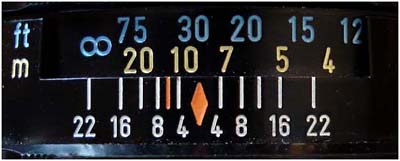wjlapier
Well-known
So, I couldn't resist buying another folder after I bought the Semi Leotax DL. This time around I found a Zeiss Ikonta A 521 Vertical--at least that's what the seller called it and the name is good as a search term.
It seems to work well and we will see how light tight the bellows are--seller said they are light tight. Down to 1/10th of a second the shutter sounds about right, but lower than that it's irregular. Lens is a bit hazy around the edges but the center looks pretty good. All the way for Estonia--to the USA took 1 week. Amazing.
As you can see in the photo below there is piece missing. The tiny screw that keeps the lens from going past infinity--the Leotax has one. No self timer on the Ikonta either.
So, a couple of questions. Shooting the camera using the red dots, does this indeed produce the sharpest possible images? I'm assuming sunny 16 and the shutter speed is 1/ whatever the iso of the film is--is this correct? There are no aperture markings to determine scale focus. Finally, any way to determine the age of the camera by the serial number?


It seems to work well and we will see how light tight the bellows are--seller said they are light tight. Down to 1/10th of a second the shutter sounds about right, but lower than that it's irregular. Lens is a bit hazy around the edges but the center looks pretty good. All the way for Estonia--to the USA took 1 week. Amazing.
As you can see in the photo below there is piece missing. The tiny screw that keeps the lens from going past infinity--the Leotax has one. No self timer on the Ikonta either.
So, a couple of questions. Shooting the camera using the red dots, does this indeed produce the sharpest possible images? I'm assuming sunny 16 and the shutter speed is 1/ whatever the iso of the film is--is this correct? There are no aperture markings to determine scale focus. Finally, any way to determine the age of the camera by the serial number?









